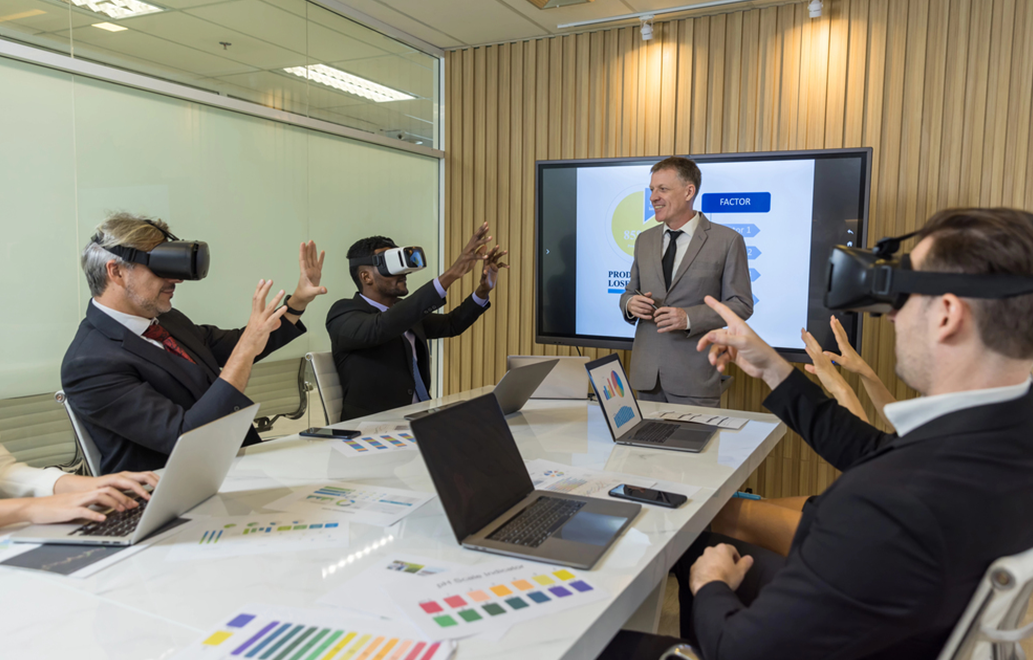
Virtual reality meetings transform how teams connect and collaborate across distances. This technology creates immersive spaces where participants feel present together, despite physical separation. Virtual reality business meeting solutions allow for natural interactions that go beyond video calls.
Attendees can share ideas, manipulate 3D objects, and engage more deeply. VR for meetings breaks down barriers of location and traditional communication, offering richer collaboration and creativity. Understanding these benefits and applications reveals how virtual reality meetings redefine business communication.
Enhanced Engagement and Collaboration
Virtual reality meeting platforms foster higher engagement by making participants active contributors rather than passive listeners. Immersive environments simulate real meeting rooms where people can use tools like virtual whiteboards and 3D models to collaborate in real time. This tactile interaction boosts creativity and problem-solving.
VR meetings keep users focused longer and improve information retention. Enhanced engagement translates into more effective teamwork and faster decision-making.
Customizable Virtual Spaces
Businesses can design virtual reality meetings tailored to their needs. These customizable spaces reflect company culture and branding, making meetings feel personal and aligned with business goals. Virtual rooms can range from realistic office setups to imaginative environments that inspire innovation.
Customization allows teams to choose layouts suited for brainstorming, presentations, or training. This flexibility improves comfort and productivity by matching the meeting format to its purpose.
Cost Savings and Environmental Benefits
Virtual reality meetings reduce the need for travel, saving companies significant costs on flights, hotels, and venues. These savings make VR an attractive solution for global teams and client presentations. Additionally, cutting down travel lowers carbon emissions, supporting sustainability efforts.
VR meetings offer a practical way to maintain strong communication while minimizing environmental impact. Companies adopting VR demonstrate a commitment to both efficiency and responsible business practices.
Practical Use Cases for VR Meetings
Virtual reality meetings find applications across many industries. Remote teams use VR to strengthen collaboration and build rapport through immersive interaction. Sales and marketing professionals conduct product demonstrations within virtual spaces, showcasing features in ways traditional meetings cannot match.
Training departments employ VR to simulate hands-on experiences that accelerate learning and skill acquisition. Educational institutions use VR meetings to create engaging lectures and group projects for distributed students. The diverse applications highlight VR’s versatility as a communication tool.
Overcoming Implementation Challenges
Introducing virtual reality meetings involves selecting compatible hardware and software that fit organizational needs. Training staff and managing technical issues help smooth the transition. Alternatives like web-based VR platforms ensure inclusivity for participants without headsets.
Addressing these challenges early helps companies fully unlock VR’s potential for business collaboration. Thoughtful planning and support create positive experiences that encourage widespread adoption.
How Multi Image Group Elevates Your Virtual Meeting Experience
At Multi Image Group, we combine innovation with event branding design and application expertise to deliver virtual, augmented and mixed realities that engage audiences. Our team crafts immersive virtual reality meetings that foster authentic interaction and elevate your brand presence.
We guide you through integrating VR technology seamlessly into your business communication, creating dynamic environments that connect and inspire.
Partner with us to transform your virtual meetings into compelling experiences that drive collaboration and growth.



